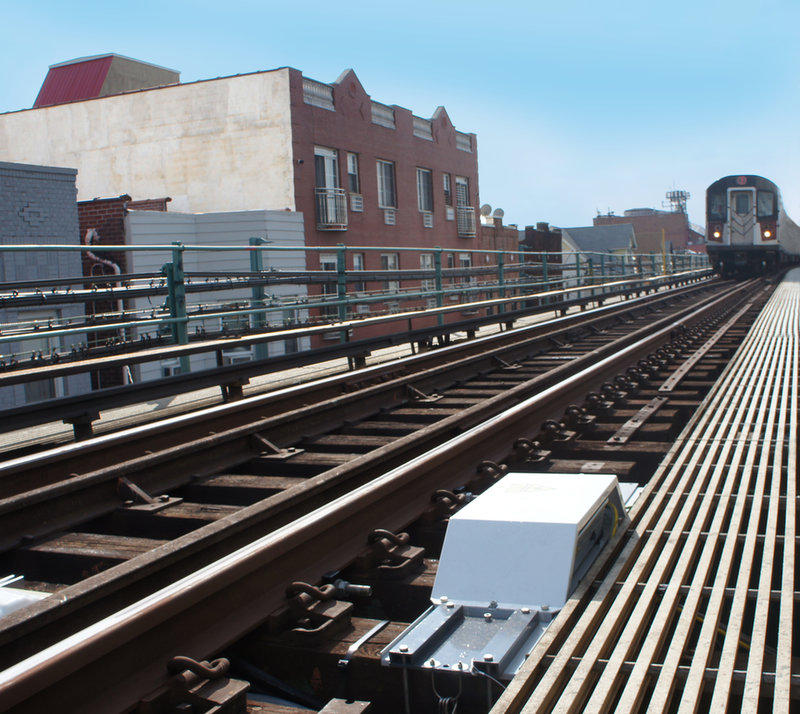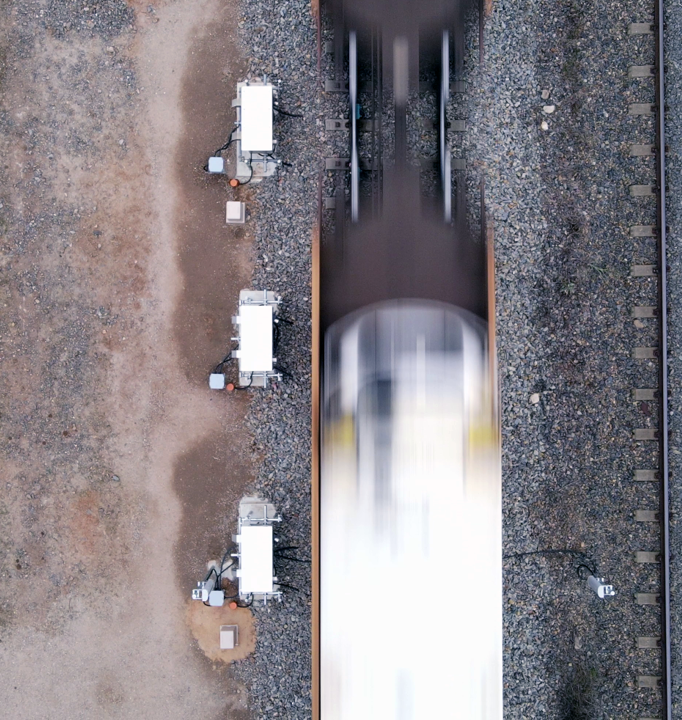The TBOGI Technology
TBOGI are a new generation of wayside system. Using modern technology and an advanced array of geometry metrics, TBOGI delivers unparalleled in-service assessments of individual bogies and wheelsets. TBOGI systems are a cornerstone of efficient wheel-rail interfaces, and an essential component of cost-effective railways.
Gain twice the wheel life. TBOGI pinpoints the source of accelerated wear issues. Early corrections yield longer wheel life and lower maintenance costs.
Stop premature rail wear, especially through curves. TBOGI identifies the specific defects responsible for characteristic rail wear. Railways can prioritise interventions and target the issues that are most prevalent in their network.
Improve fuel/energy efficiency. TBOGI quickly singles out any bogies experiencing higher than normal rolling resistance (up to 40% higher). By focusing on specific bogies, railways can conserve fuel/energy and reduce costs.
Reduce risk. TBOGI helps railways reduce the risk of unscheduled maintenance and derailment. Prompt attention to the most severe defects improves safety and lowers risk exposure.
Reveal hidden root causes. TBOGI offers unique insights for effective maintenance and uncovers issues other monitoring systems can’t spot. Railways are better equipped to take smart, targeted action to end repeated maintenance costs.
TBOGI systems are wayside technology, installed next to the track, outside the clearance envelope. They are installed at trunk points of a network (on straight track), where the system can watch traffic going at speed. This makes TBOGI a cost-effective method of capturing the state of all rolling stock and trending it over time to know when – and why – the costliest issues are emerging.
TBOGI identifies defects, and points maintenance to the causal component(s) that may be out of sight.
Identifying the underlying defects breaks the wear/cost cycle, for both the rolling stock and the rail infrastructure.

Reduce Wheel Wear Rate
Asymmetrical wear is self-feeding, increases the stress on bogie components, and accelerates the loss/failure of material from the wheels.
TBOGI monitors this increase in the wear regime.
Railways using TBOGI report significant increases in the lifespan of wheels and other bogie components (including bearings, brakes, suspension, etc.). By using TBOGI data to reduce the wheel wear rate, other bogie components are subsequently under significantly less stress.
Reduce Rail Wear Rate
The defects detected by TBOGI are those that compromise the wheel-rail interface: they underly accelerated wear and RCF to the rail.
- Tracking Position defects result in head checking and gauge-corner cracking, as well as rail head cracking from shelling and longitudinal fatigue.
- Angle-of-Attack defects result in intermittent crown wear as lateral material flows, lateral fatigue cracking that can lead to rail breaks, and surface breaking cracks that can develop into rail squats.
- Hunting defects result in a combination of wear patterns, particularly repeat flange impacts and scrubbing wear actions against the rail.
By addressing TBOGI defects, railways can significantly reduce grinding and rail replacement.
Improve Safety
Railways using TBOGI have significantly reduced derailment risk. TBOGI identifies many risks that not identified by other monitoring systems.
Prior to derailment, high-risk TBOGI defects inflict major RCF and wear at the wheel-rail interface. The benefits of intervention are therefore two-fold.

We can train our technology to help them to detect and prevent their issues
Reduce Service Interruptions
TBOGI accurately trends bogie condition, and because the metrics often precede many other defects, the data reduces unplanned maintenance events.
TBOGI Features
- Laser-based collection of highly accurate measurements for each wheelset of trains passing at speeds up to 300 km/h
- Comprehensive data tools, easily accessible via browser-based interfaces and a dedicated application for mobile devices
- Clear defect alerts and steps for targeting the right components, not only the obvious ones
- Accurate measurements regardless of changes in weather, train configuration, and rail lubrication conditions
- Identification of bogies with defective stability (hunting), measured using standard units rather than a meaningless index.
- System does not require a special track layout.
- System is installed at a safe distance from passing trains and does not interfere with track maintenance work.
- System is simple to install and maintain.
- Systems proven to be railroad-tough, highly reliable, and cost-effective.
Contact Us
Wayside Inspection Devices (WID)
20, rue de la Cooperative
Rigaud, QC J0P 1P0, Canada
Tel: +1 450 206 0681
Website:www.wid.ca
Email: info@wid.ca